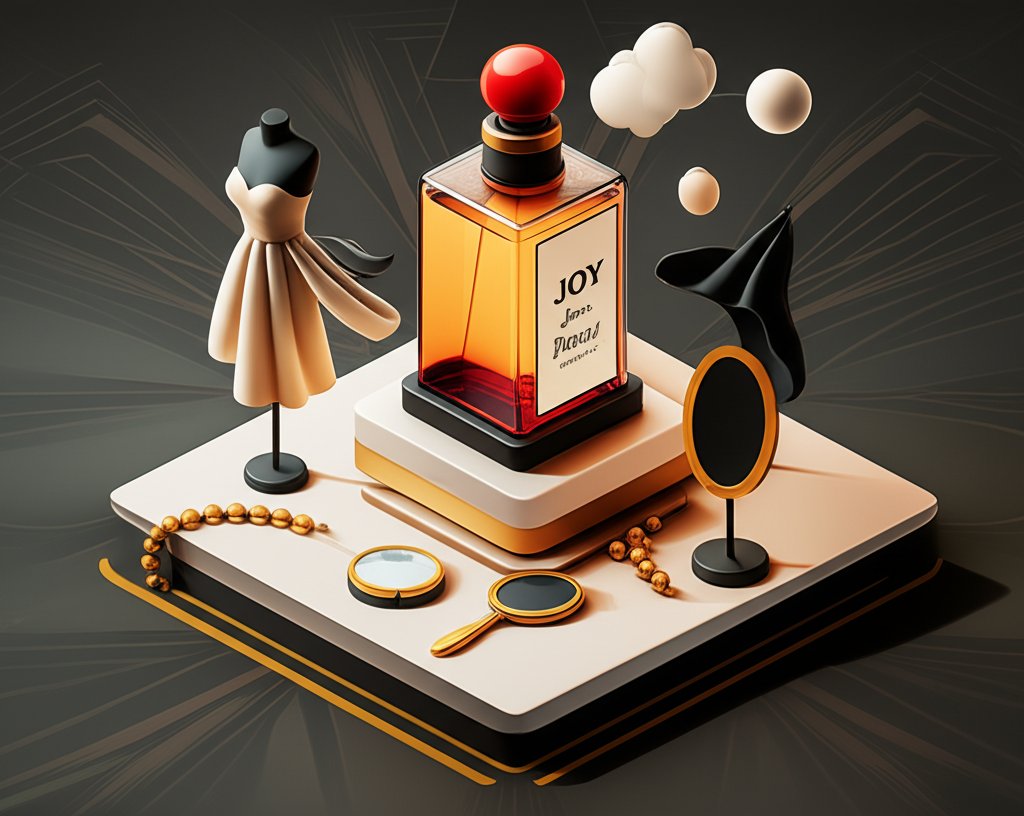The “Jean of fashion” crossword clue has puzzled countless solvers, its elegant simplicity often hiding a monumental figure in fashion history. If you’ve ever stared blankly at this clue, wondering which “Jean” the puzzle masters could possibly mean, you’re not alone. The definitive answer, consistently, points to one groundbreaking visionary: Jean Patou.
Beyond merely providing the solution, this article will delve deep into who Jean Patou was, his revolutionary impact on haute couture and women’s dressing, and how his legacy continues to shape contemporary style. We’ll arm you with advanced crossword clue solving strategies, ensuring that the “Jean of fashion” becomes a familiar friend rather than a formidable foe.
Decoding the Elusive ‘Jean of Fashion’ Crossword Clue

The “Jean of fashion” clue is a classic for a reason: it’s short, impactful, and hints at a specific cultural reference. For those outside the inner circles of fashion history, it can be a true head-scratcher. But once you know the name, it unlocks a fascinating chapter of style evolution.
The Definitive Answer: Jean Patou
When a crossword puzzle asks for the “Jean of fashion,” the answer is almost universally PATOU. This four-letter surname belongs to Jean Patou, a French designer whose ideas about comfort, leisure, and modern femininity fundamentally reshaped the fashion landscape of the early 20th century. His name is synonymous with the liberation of women’s dress from the restrictive corsetry that dominated previous eras.
Common Clue Variations and Letter Counts
While “Jean of fashion” is the most direct phrasing, this crossword clue can appear in several forms, often providing additional hints or letter counts:
- “Jean _, fashion designer (4)” – Answer: PATOU (4 letters)
- “French couturier Jean _ (4)” – Answer: PATOU (4 letters)
- “Designer Jean _ (4)” – Answer: PATOU (4 letters)
- “Iconic ‘Jean’ in French fashion (4)” – Answer: PATOU (4 letters)
The “(4)” in these variations is your strongest ally, immediately narrowing down potential “Jeans” to just those with a four-letter surname. Always pay close attention to numerical indicators in crossword clues!
Why ‘Jean’ Isn’t Always About Denim
A common pitfall for solvers is to associate “Jean” with denim or jeans (the garment). While denim is undeniably a cornerstone of modern fashion, the crossword clue “Jean of fashion” refers to a person’s first name, “Jean,” a popular French name, rather than the fabric. This clever wordplay is precisely what makes the clue tricky and memorable. Understanding this distinction is key to successfully solving it and similar wordplay-based clues.
Jean Patou: A Pioneer Who Redefined Haute Couture
Born in Normandy, France in 1887, Jean Patou arrived in Paris in 1910 with an ambitious vision for women’s fashion. He opened his own salon in 1914, just as World War I was about to dramatically alter society and, consequently, style. Patou wasn’t merely a designer; he was a strategic thinker who understood the changing needs and desires of modern women.
Early Life and Vision: Crafting a Fashion Empire
Patou’s background in his family’s tanning and fur business instilled in him a keen understanding of materials and craftsmanship. From the outset, he sought to create clothing that was both exquisitely made (befitting haute couture) and supremely comfortable. His early focus on practical yet elegant sportswear was revolutionary, contrasting sharply with the stiff, formal attire prevalent at the time. He believed in simplifying silhouettes and empowering women through their wardrobe choices, a philosophy that laid the groundwork for decades of fashion history.
Liberating Women’s Fashion: The Birth of Sportswear
Patou is widely credited as the “father of sportswear.” He recognized that women were becoming more active, participating in sports, driving cars, and traveling. Their clothing needed to adapt.
- Relaxed Silhouettes: He championed loose, fluid designs, dropping waistlines and introducing simple, straight-cut dresses.
- Practical Fabrics: He embraced knitwear, creating chic knit bathing suits, cardigans, and tennis dresses that offered freedom of movement without sacrificing elegance. These were a stark contrast to the heavy, restrictive garments of the pre-war era.
- Influence of Tennis: His designs for famous tennis player Suzanne Lenglen, featuring knee-length pleated skirts and sleeveless tops, caused a sensation and popularized comfortable athletic wear for women.
This focus on comfort and functionality redefined what haute couture could be, moving it beyond purely ornamental to embrace a new, active lifestyle.
Beyond Clothing: The Legend of ‘Joy’ Perfume
While his contributions to clothing fashion history are immense, Jean Patou is also immortalized through one of the world’s most iconic fragrances: Joy. Launched in 1930, at the height of the Great Depression, Patou intended “Joy” as a lavish gift to his affluent American clientele, who were suffering financially. Marketed as “the world’s most expensive perfume,” its rich blend of jasmine and rose was a defiant symbol of luxury and optimism during a time of global despair. Joy remains a bestseller and a testament to Patou’s discerning taste and marketing genius.
Patou’s Business Acumen and Marketing Innovations
Jean Patou was a brilliant designer and an astute businessman. He was among the first in haute couture to:
- Use Models of Different Nationalities: Featuring American models in his Paris shows to appeal to international clients.
- Create Branded Scarves and Accessories: Expanding his brand beyond clothing.
- Pioneer the Monogram: His signature “JP” monogram was used on many accessories, an early form of brand identity.
His understanding of branding and global appeal was far ahead of his time, making him a true innovator in the business of fashion.
Jean Patou’s Enduring Legacy in Fashion History
Patou’s untimely death in 1936 at the age of 49 left a void in the fashion world, but his influence permeated the industry for decades to come. His sister Madeleine Patou and her husband Raymond Barbas continued the house, and later designers like Marc Bohan and Karl Lagerfeld (briefly) worked there. The brand, now simply Patou, was revived by LVMH in 2018 under the creative direction of Guillaume Henry, celebrating its rich heritage while embracing modernity.
The Roaring Twenties and the Flapper Era
Patou’s design philosophy perfectly encapsulated the spirit of the Roaring Twenties. As women gained more independence, they sought clothing that reflected their newfound freedom. Patou’s relaxed silhouettes, shorter hemlines, and sportswear designs were instrumental in defining the “flapper” look, moving away from corseted formality to a more youthful, dynamic aesthetic. He was a major force in shaping the iconic imagery of this pivotal decade in fashion history.
Shifting Silhouettes: From Corsets to Comfort
Perhaps Patou’s most profound impact was his role in permanently shifting the paradigm of women’s dress from constraint to comfort. Before him, fashion often dictated a woman’s posture and movement. Patou showed that elegance and freedom could coexist. This radical idea paved the way for generations of designers who would prioritize wearability and practicality in their haute couture and ready-to-wear collections.
Influence on Modern Sportswear and Ready-to-Wear
The concept of sportswear as stylish, everyday attire, which Patou pioneered, is ubiquitous today. From designer sneakers to luxury athletic wear, the lines between athletic gear and high fashion have blurred, a trend that can be traced directly back to Patou’s innovations. He effectively laid the foundation for the modern ready-to-wear industry by demonstrating a demand for well-designed, comfortable clothes that weren’t necessarily bespoke haute couture.
Comparing Patou to Contemporaries: Chanel and Lanvin
Patou is often compared to his great contemporary, Coco Chanel, as both were titans of early 20th-century French fashion who championed comfortable, modern styles. While Chanel is famous for her little black dress, tweed suits, and jersey fabrics, Patou focused more on athletic wear, geometric simplicity, and vibrant colors inspired by folk art. Jeanne Lanvin, another contemporary, was renowned for her mother-and-child monogram and soft, feminine robes de style. Together, these designers fundamentally reshaped haute couture and defined the new silhouette for women after World War I, each contributing distinct yet complementary visions to fashion history.
Mastering Crossword Clues: Strategies for Success
Solving a crossword clue like “Jean of fashion” becomes much easier with a systematic approach. Here are strategies to boost your crossword prowess.
Contextual Analysis: Beyond the Obvious
- Wordplay Awareness: Crosswords love puns, double meanings, and homophones. Always consider if a simple word might have a more obscure or tangential meaning. For “Jean of fashion,” the trick is the name vs. the fabric.
- Theme Recognition: Sometimes, an entire puzzle or a section might revolve around a specific theme (e.g., French artists, types of birds). If other clues hint at French culture or famous designers, it strengthens the likelihood of Patou as the “Jean.”
- Part of Speech: Determine if the clue requires a noun, verb, adjective, or adverb. This helps narrow down possibilities.
Recognizing Patterns and Common ‘Fashion’ Jeans
Beyond Patou, be aware of other significant “Jeans” in fashion history who might appear in more specialized clues:
- Jean Paul Gaultier: Known for his avant-garde, often provocative designs, cone bras, and sailor stripes.
- Jean-Charles de Castelbajac: Famous for his pop art-inspired, playful, and often primary-colored creations.
- Jean-Michel Bazire: A celebrated French harness racing driver, but less likely to appear in a general “fashion” clue. This highlights the importance of the “fashion” context.
While these are less common answers for the direct “Jean of fashion” clue, knowing them enhances your overall crossword clue vocabulary.
Utilizing Cross-References and Letter Constraints
- Intersecting Clues: The most powerful tool in crossword solving. If you’re stuck on “Jean of fashion” (4 letters), solving an intersecting clue can provide a letter that instantly reveals “PTU,” making the answer obvious.
- Letter Count: As seen with Patou, the numerical indicator “(4)” is invaluable. Always count the blanks or letters specified.
- First/Last Letters: Some clues might imply the first or last letter, or even a letter at a specific position within the word.
Top Digital Crossword Resources
Don’t hesitate to use online resources when stumped. They’re excellent learning tools:
- Crossword-Solver.io: Allows you to input known letters and receive suggestions.
- Wordplays.com: Comprehensive database of clues and answers.
- Dan Word: Another robust solver with a wide range of current and archived clues.
- Merriam-Webster (Dictionary/Thesaurus): Essential for understanding word nuances and synonyms that might be hidden in clues.
These tools can not only give you the answer but also help you recognize patterns and expand your knowledge for future puzzles.
The Evolution of Haute Couture: Patou’s Place in History

Haute couture is more than just expensive clothing; it’s an art form, a tradition governed by strict rules, and a pinnacle of bespoke craftsmanship. Patou’s radical approach to women’s wear, while embracing modernity, always remained firmly rooted in the standards of haute couture.
Defining Haute Couture: Then and Now
Historically, haute couture referred to custom-made clothing for private clients, hand-crafted in Paris by specific fashion houses according to stringent criteria set by the Chambre Syndicale de la Haute Couture. This included a certain number of employees, designing original models each season, and presenting collections. Today, while the criteria are still rigorous, the concept has evolved. It remains the highest form of fashion artistry, showcasing unparalleled skill and creativity, often dictating trends that later filter down to ready-to-wear.
How Patou Innovated Within a Traditional Framework
Patou was a master of working within the haute couture system while pushing its boundaries. He understood the demand for exquisite tailoring and luxurious fabrics but applied these principles to designs that prioritized a woman’s lifestyle. He took the meticulous craftsmanship of haute couture and fused it with the emerging desire for practical, comfortable, and active wear. This made his creations exceptionally relevant to the modern woman of the 1920s and beyond, ensuring his prominent place in fashion history. He proved that haute couture could be both aspirational and adaptable to everyday life, not just for grand occasions.
The Enduring Brand: Patou Today
After several phases and creative directors, the house of Jean Patou was acquired by LVMH in 2018 and rebranded simply as Patou. Under designer Guillaume Henry, the brand has been re-launched with a focus on modern, joyful, and inclusive luxury, paying homage to Jean Patou’s original spirit of liberation and elegance. This reimagining ensures that the legacy of Jean Patou, the “Jean of fashion,” continues to influence contemporary style and remains a vibrant part of the global fashion history narrative.
Conclusion
The “Jean of fashion” crossword clue is more than just a puzzle; it’s a gateway to understanding a pivotal figure in fashion history. Jean Patou wasn’t just a designer; he was a revolutionary who anticipated the needs of modern women, liberating them from restrictive norms and ushering in an era of elegant comfort and sportswear. His pioneering spirit in haute couture, his business innovations, and the enduring legacy of “Joy” perfume cement his status as an icon.
The next time you encounter this classic clue, you’ll not only have the answer—PATOU—but a newfound appreciation for the designer who forever changed how women dressed. By understanding the intricate connections between wordplay, historical context, and the evolution of style, you can transform a simple crossword clue into a fascinating journey through the heart of fashion’s past. So go forth, crossword warriors, and conquer every “Jean of fashion” with confidence and a deeper understanding of haute couture!
Frequently Asked Questions (FAQ)
Who was Jean Patou?
Jean Patou was a prominent French fashion designer and couturier who revolutionized women’s fashion in the early 20th century. He is often credited as the “father of sportswear” for his pioneering designs that championed comfort, freedom of movement, and relaxed silhouettes, moving away from the restrictive corsetry of previous eras.
What is Jean Patou famous for?
Jean Patou is famous for several key contributions:
What does “Jean of fashion” mean in a crossword?
In a crossword puzzle, the clue “Jean of fashion” refers to the famous French fashion designer Jean Patou. The trick of the clue lies in distinguishing the common first name “Jean” from “jeans” the denim garment.
How many letters is “Patou”?
The surname “Patou” has four letters. This is a crucial detail often provided in crossword clues, such as “Jean _, fashion designer (4),” to help solvers identify the correct answer.
Was Jean Patou a contemporary of Coco Chanel?
Yes, Jean Patou was a direct contemporary of Coco Chanel. Both designers were instrumental in shaping French haute couture and women’s fashion during the interwar period (1910s-1930s), advocating for modern, comfortable, and practical styles that liberated women from older, more restrictive clothing norms.
What is haute couture?
Haute couture is the creation of exclusive, custom-fitted high-fashion clothing. It is hand-made from start to finish for individual clients, often requiring hundreds of hours of work, and typically made from high-quality, expensive, and unusual fabrics. The term is protected by French law and defines houses that adhere to strict standards set by the Chambre Syndicale de la Haute Couture. Jean Patou’s work exemplified the highest standards of haute couture while redefining its aesthetic.










